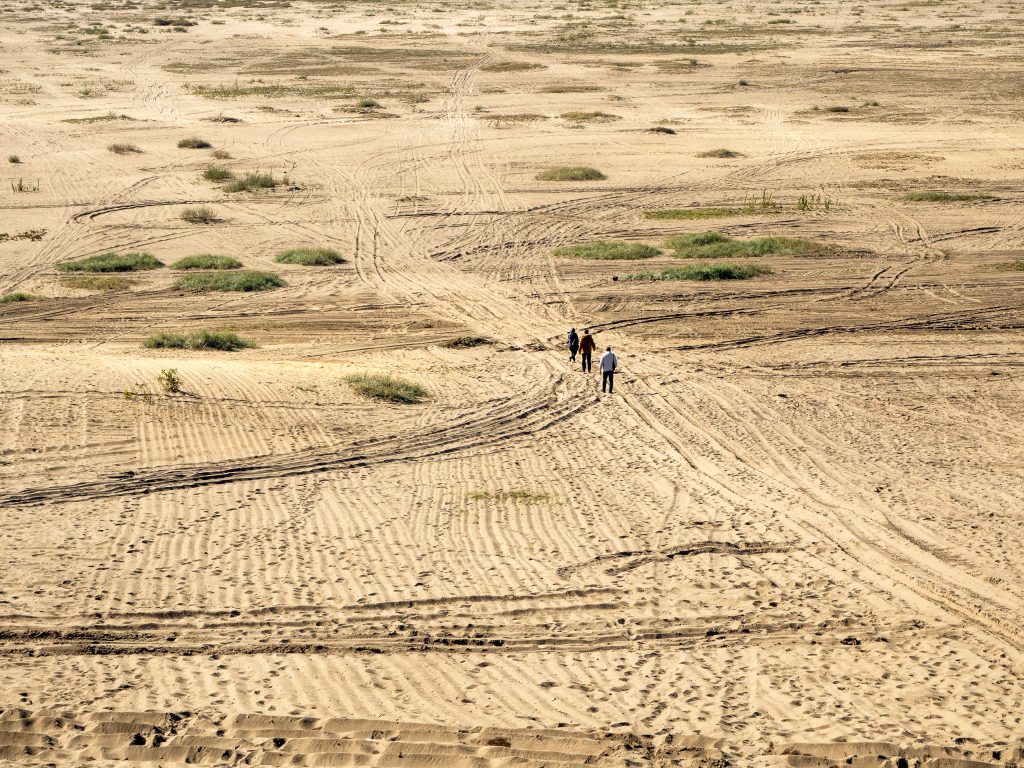Every year, on June 17th, we celebrate the World Day to Combat Desertification and Drought. This date was established by the UN General Assembly in 1994, marking the 31st anniversary of the adoption of the United Nations Convention to Combat Desertification (UNCCD). The message of this day remains relevant not only in June or during the summer, but year-round.
Desertification and drought are phenomena that until recently seemed distant. They were discussed in the context of the distant future and distant countries. Today, however, we know that these are problems that also affect the reality of life in Poland. Soil degradation, increasingly long periods without rainfall, extreme weather phenomena, and the uneven distribution of water resources are becoming an increasingly bigger challenge. Climate change is turning drought, which was once perceived as a seasonal phenomenon, into a chronic problem, affecting not only agriculture and industry but also the daily lives of each of us.
Why Is Desertification Also Affecting Poland?
Although most Polish lands are not considered deserts geographically, soil degradation and water shortages are becoming a real threat. There are many reasons for this. Intensive agriculture, inappropriate land use, concrete paving, insufficient water retention, and a shrinking area of biologically active areas are just some of the factors exacerbating the effects of drought. As a result, we are experiencing more and more of falling groundwater levels, drying up rivers, and problems with the availability of water for irrigation.
According to data from the State Water Holding Polish Waters, Poland is among the countries with one of the smallest drinking water resources in Europe. The average annual water availability per capita is approximately 1,600 m³, compared to the European average of approximately 4,500 m³.
The Błędów Desert – a Warning From the Past
Although desertification is often associated with remote regions of the world, in Poland we also have an example of an area created by environmental degradation – the Błędów Desert. This unique area on the border of the Silesian Upland and the Olkusz Upland is not a desert in the classic, climatic sense, but the result of intensive human activity. As early as the Middle Ages, massive deforestation was carried out there to obtain timber for mining and metallurgy. This, combined with animal grazing, led to the exposure of sand and the disappearance of vegetation. Today, the Błędów Desert is a tourist attraction, but also a warning – it demonstrates how easily the natural environment can be impoverished and how difficult it is to restore it. Its history reminds us that the effects of our actions on nature can be long-lasting and difficult to reverse.
“Land degradation and drought pose serious threats to our economy, stability, food production, water resources, and quality of life,” said UNCCD Executive Secretary Ibrahim Thiaw. “Rebuilding the earth is our chance to reverse these threats and create new opportunities.”
Colombia Shows Direction: Local Action, Global Impact
Colombia hosted the global celebration of the World Day to Combat Desertification and Drought 2025, organized under the auspices of the United Nations. The country’s authorities used this occasion as a catalyst to transform its national environmental policy and sustainable rural development. Ambitious goals for 2030 were presented, aligned with global initiatives, with a focus on social justice, restoring degraded ecosystems, and building a resilient, green economy.
The topic of drought, which is increasingly affecting regions such as northeastern Colombia, was particularly prominent. For example, in the department of La Guajira, pilot projects were implemented to harvest rainwater and restore drought-resistant vegetation. These efforts not only improved the availability of drinking water for local communities but also helped reduce the migration of people from areas most affected by water stress.
The conclusions from the global conference in Bogota are clear: by investing in the earth and restoring its life, we are investing in society’s resilience to the impacts of climate change – including prolonged droughts – and in a future where nature and humanity exist in balance. Colombia’s example demonstrates that local actions have global impact – and can also become an inspiration for Poland.
Retention – the Most Effective Way to Combat Drought
Our response to the above challenges should be water retention. We’re not just referring to large-scale hydraulic engineering investments. We should also pay equal attention to so-called “small retention,” meaning the creation of ponds, ditches, wetlands, and rain gardens. By creating a network of small retention facilities, water from precipitation is better retained directly where it occurs. Therefore, we should encourage local governments to invest in green and blue infrastructure in cities, which will allow us to better manage available rainwater. If we manage to retain it, it can be reused.
Every inch of land that isn’t concreted over matters. Every tree and flower meadow helps mitigate the effects of drought. Every retention reservoir or reclaimed watercourse helps ensure that water remains available to us longer, thus reducing the effects of desertification.
Together We Can Do More
The fight against desertification and drought doesn’t end at midnight on June 17th. It’s a long-term process requiring the cooperation of scientists, local governments, farmers, spatial planners, engineers, and each of us. We must implement changes in our immediate surroundings. We can, among other things, use water-retention solutions in our gardens, care for trees and greenery, educate others, and support local initiatives.
Poland has enormous potential to become a leader in the green transformation, especially in the context of responsible water management. However, we need long-term thinking, courage in spatial planning, and an awareness that the consequences of our actions – or lack thereof – will be felt for generations to come.
Everyday Concern Instead of One-Off Gestures
The World Day to Combat Desertification and Drought is a pretext, an opportunity, and an impulse for each of us to reconsider our everyday actions. Let counteracting the effects of these phenomena become our everyday reality, not a temporary occurrence. The water crisis won’t solve itself, and desertification won’t stop without collective mobilization. From water retention to spatial planning to individual choices, every decision matters. Make it consciously.
To learn more about this year’s Desertification and Drought Day, click HERE

 PL
PL

